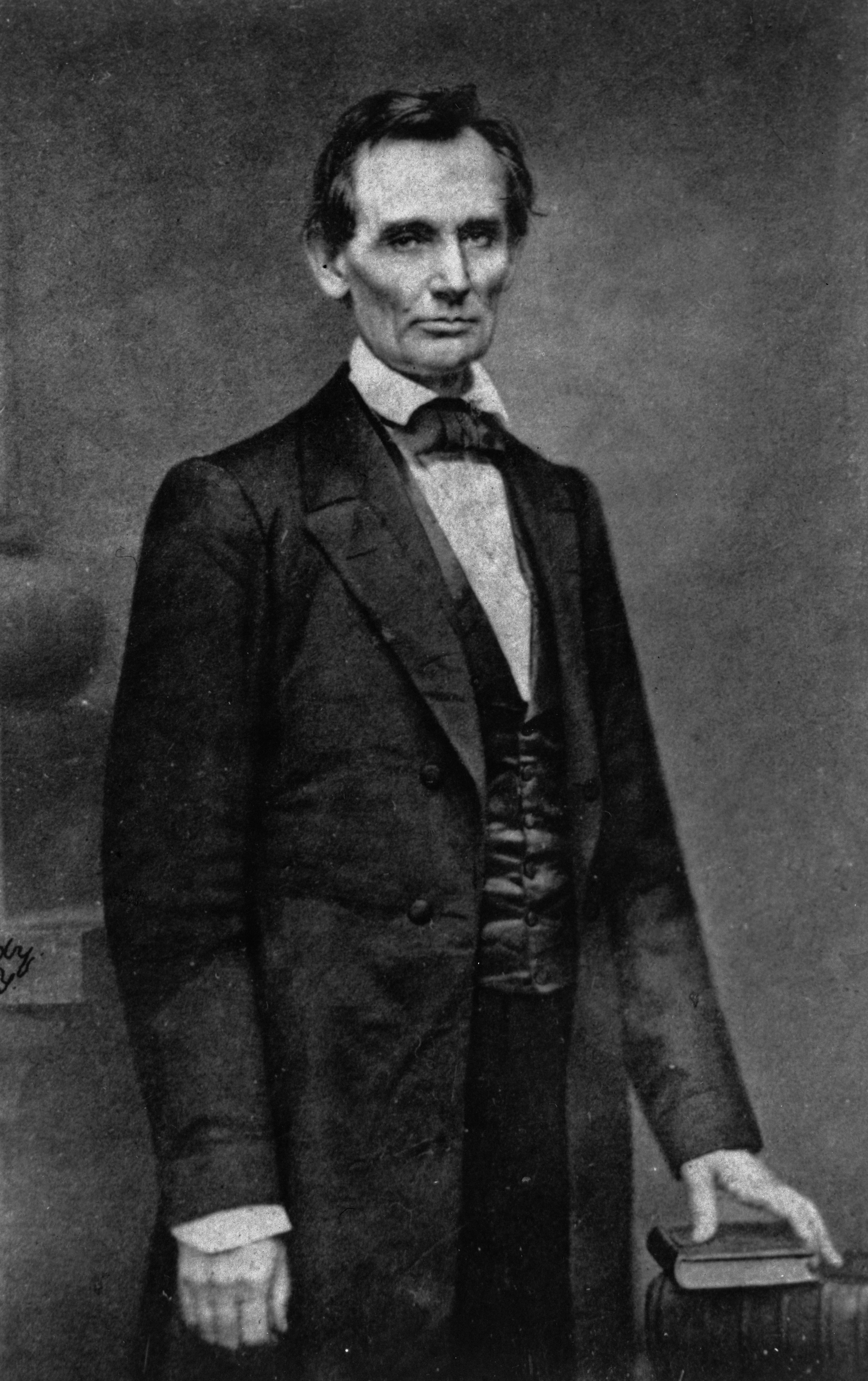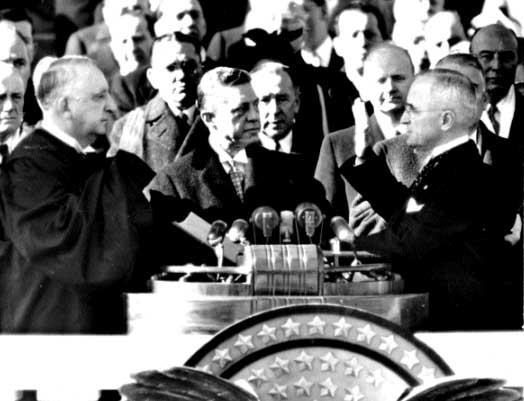
1840’s
The daguerreotype was the earliest type of photographic process created. To process a daguerreotype, the photographer exposed an image on a sensitized silver-plated sheet of copper to produce a developed shimmery image. The exposure time took about a half hour. For portraits, in order to keep the person still, to avoid blurring the image, the photographer would place iron stands or armrests behind the sitters to help keep them still. The only way it could be copied was by re-photographing the original.

President Martin Van Buren
Image by: Matthew Brady
Image source: https://commons.wikimedia.org/wiki/File:Martin_Van_Buren_daguerreotype_by_Mathew_Brady_circa_1849_-_edit_1_cropped.png
1850-1860’s
In 1851, Frederick Scott Archer created the first photographic process, the Collodion Process. Glass negatives were prepared by using the wet collodion process. As mentioned by Lydia Tederick, “By the 1860s, photography had undergone several important developments. The most significant change was the ability to produce paper prints from glass negatives.” This was a major development and allowed for the famous portrait of Abraham Lincoln by Matthew Brady to be printed in the newspaper for the public to see, days after the portrait was taken.

President Abraham Lincoln
Photo by Matthew Brady
Image source: https://en.wikipedia.org/wiki/Mathew_Brady
1870’s
In the 1870’s, a new type of photographic plate was discovered by Robert L. Maddox, the dry plate. The plates contained silver salts in silver nitrate which allowed these plates to be prepackaged saving photojournalists a lot of time. They allowed for the plates to be ready for use, no longer needing to carry around all their chemicals. The exposure time was also less now under one minute.

Inauguration of President Rutherford Hayes
Image by: unknown
Image source: http://www.history.com/topics/us-presidents/rutherford-b-hayes/pictures/rutherford-b-hayes/inauguration-of-rutherford-b-hayes
1880’s
In 1880’s the first Kodak camera hit the marked, invented by George Eastman which used roll film. This was a major advancement in how photos were now taken. The cameras used could now be easily handheld and contained film, or paper negatives that could hold up to 100 images and then be sent back to get developed. This allowed photojournalists to freeze motion!

Inauguration of President Grover Cleveland
Photo by Congress library 1885
Image source: http://www.inaugural.senate.gov/swearing-in/event/grover-cleveland-1885
1900's

President Teddy Roosevelt
Image by: unknown
Image source:https://www.nobelprize.org/nobel_prizes/peace/laureates/1906/roosevelt-photo.html
https://www.nobelprize.org/nobel_prizes/peace/laureates/1906/roosevelt-photo.html
1940's
In 1948 the first polaroid was invented. This allowed journalists to capture a photo and it be developed instantly.

Inauguration of Harry S. Truman
Image by: unknown
Image source: https://www.google.com/search?q=harry+s+truman+inauguration&biw=1093&bih=498&source=lnms&tbm=isch&sa=X&ved=0ahUKEwietPbH7Y_NAhUPxCYKHckzBr0Q_AUIBigB#imgrc=J8h-wHwaYA1EHM%3A
1960’s
In 1963 polaroid came out with the first color film. This allowed photojournalists to capture photos in color.

Inauguration of John F. Kennedy
Photo by: Fred Tonne
Image source: image source: http://www.jsonline.com/greensheet/journal-photographer-gets-up-close-with-jfk--in-1961-b99651277z1-365840531.html
1990's-Current
Digital photography brought a whole new meaning to taking a photo. Not only are photographs now more clear, digital photograph has allowed instant uploads of the photos taken by journalists to share with the world in an instant. Film is not needed, so the process to process the photos is done by the camera itself. No more use of dark room using chemicals.
The process to capture an image used to be very difficult and time consuming for photographers and required a lot of commitment not only from them but to the person being photographed. Today, the process to capture an image is so much simpler that it ,an be done by anyone in the blink of an eye. We now have the freedom to take a picture of anything we desire whether its stationary or flying through the sky.

Inauguration of President Barrack Obama
Photo by: Jim Bourg
Image source: https://www.google.com/search?q=president+obama+inauguration&biw=1093&bih=498&source=lnms&tbm=isch&sa=X&sqi=2&ved=0ahUKEwi5nbyB9I_NAhVGYiYKHXipAHIQ_AUIBigB#tbm=isch&q=president+obama+inauguration2009&imgdii=f9B7mC68eIVTcM%3A%3Bf9B7mC68eIVTcM%3A%3BOfbMM9aHhF2mHM%3A&imgrc=f9B7mC68eIVTcM%3A

Inauguration of Harry S. Truman
Image by: unknown
Image source: https://www.google.com/search?q=harry+s+truman+inauguration&biw=1093&bih=498&source=lnms&tbm=isch&sa=X&ved=0ahUKEwietPbH7Y_NAhUPxCYKHckzBr0Q_AUIBigB#imgrc=J8h-wHwaYA1EHM%3A
1960’s
In 1963 polaroid came out with the first color film. This allowed photojournalists to capture photos in color.

Inauguration of John F. Kennedy
Photo by: Fred Tonne
Image source: image source: http://www.jsonline.com/greensheet/journal-photographer-gets-up-close-with-jfk--in-1961-b99651277z1-365840531.html
1990's-Current
Digital photography brought a whole new meaning to taking a photo. Not only are photographs now more clear, digital photograph has allowed instant uploads of the photos taken by journalists to share with the world in an instant. Film is not needed, so the process to process the photos is done by the camera itself. No more use of dark room using chemicals.
The process to capture an image used to be very difficult and time consuming for photographers and required a lot of commitment not only from them but to the person being photographed. Today, the process to capture an image is so much simpler that it ,an be done by anyone in the blink of an eye. We now have the freedom to take a picture of anything we desire whether its stationary or flying through the sky.

Inauguration of President Barrack Obama
Photo by: Jim Bourg
Image source: https://www.google.com/search?q=president+obama+inauguration&biw=1093&bih=498&source=lnms&tbm=isch&sa=X&sqi=2&ved=0ahUKEwi5nbyB9I_NAhVGYiYKHXipAHIQ_AUIBigB#tbm=isch&q=president+obama+inauguration2009&imgdii=f9B7mC68eIVTcM%3A%3Bf9B7mC68eIVTcM%3A%3BOfbMM9aHhF2mHM%3A&imgrc=f9B7mC68eIVTcM%3A

No comments:
Post a Comment